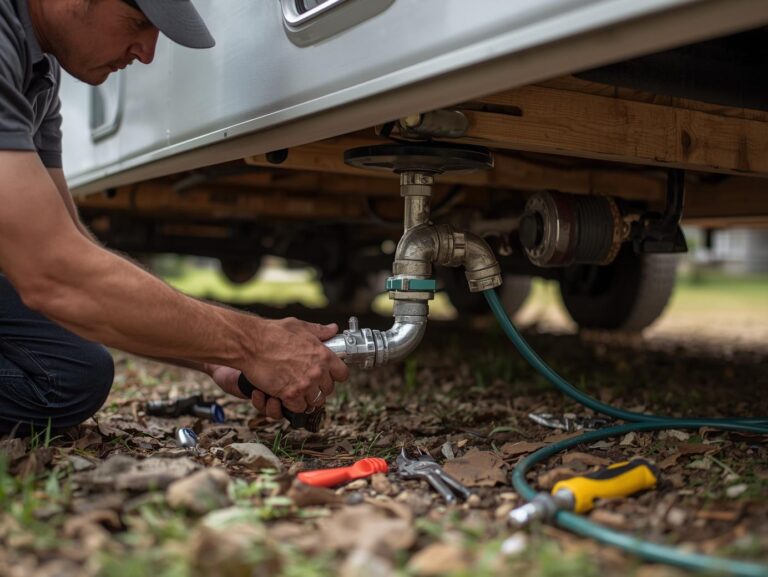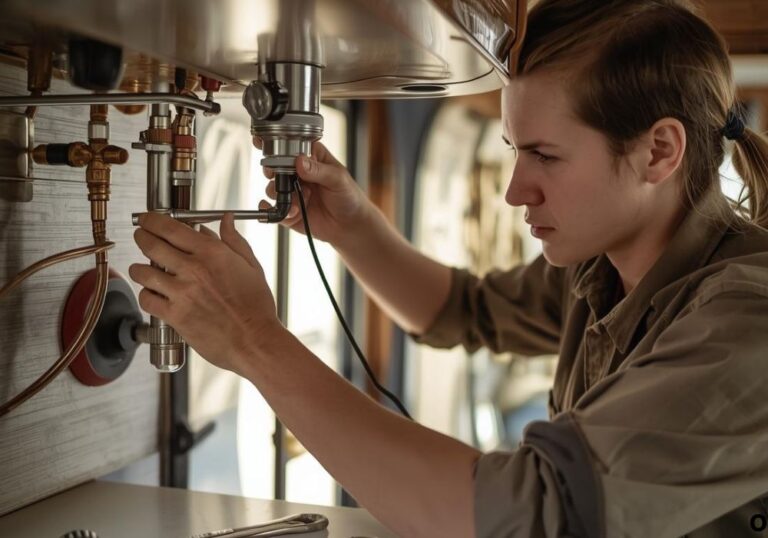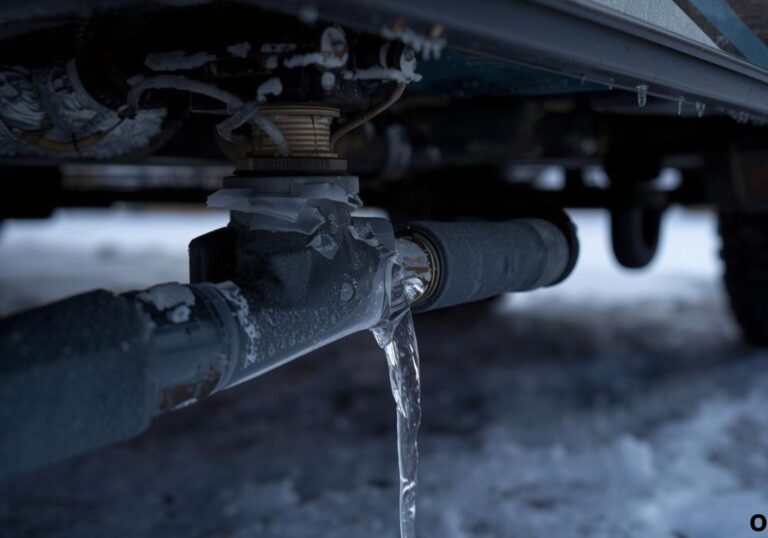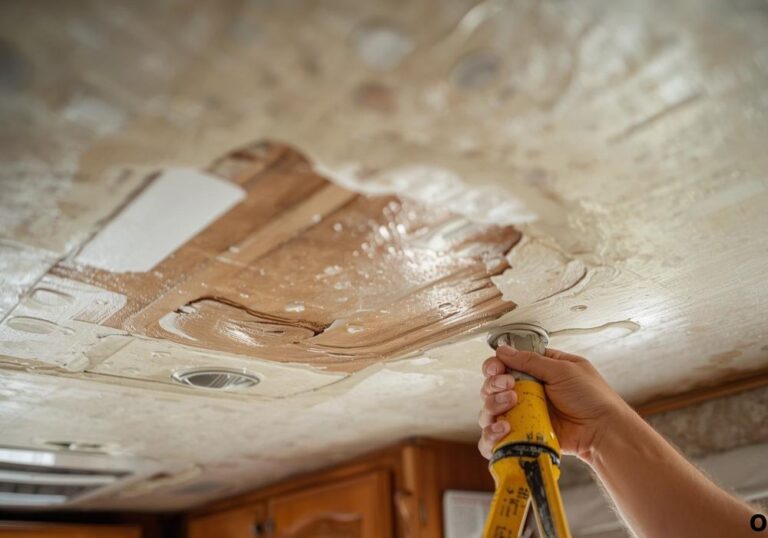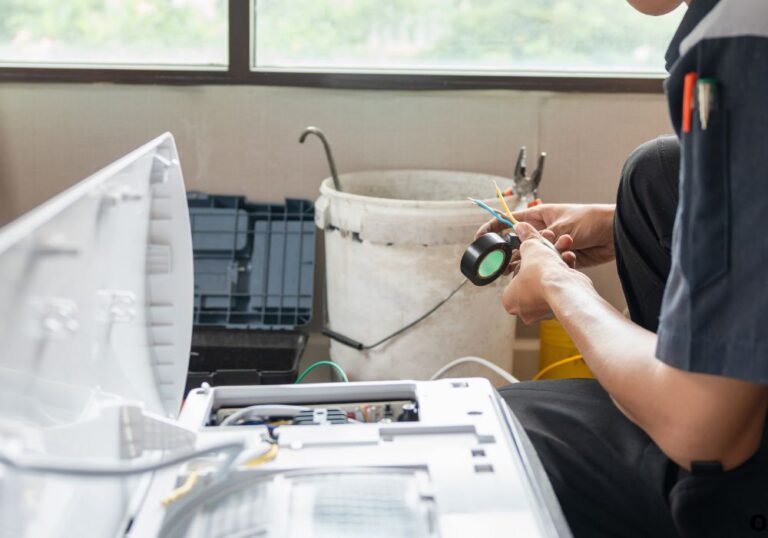How to Use Electric Water Heater in RV the Right Way
After a long day of traveling, hiking, or exploring the outdoors, there’s nothing better than stepping into your RV and enjoying a warm shower. That’s where your electric water heater becomes your best friend.
Unlike propane-based heaters that rely on gas ignition, an electric RV water heater draws power from your shore connection or generator to keep your water consistently hot. It’s simple, efficient, and perfect for campsites with electrical hookups.
However, using it incorrectly can quickly lead to problems — from tripped breakers to burnt heating elements. Many new RV owners make the mistake of turning on the heater before filling the tank, which can destroy the heating element within seconds.
Understanding how to use an electric water heater in your RV properly ensures not just comfort but also long-term reliability and safety. Once you know the steps — filling, powering, and maintaining — you can enjoy constant hot water on every trip.
Whether you’re showering, washing dishes, or cleaning up after a muddy adventure, this guide will walk you through how to use an electric water heater in an RV the right way, avoid common mistakes, and keep your hot water system running efficiently for years.
Understanding Your RV Electric Water Heater

An RV electric water heater is a small but powerful appliance that heats and stores water using an electric element, similar to a home water heater but compact and efficient for mobile living.
It typically comes in 6-gallon or 10-gallon models, powered by 120V AC electricity through your RV’s shore power connection or an onboard generator. Many modern RVs use dual-mode water heaters, which can operate on electric, gas, or both for faster heating.
Inside, you’ll find a heating element (like in an electric kettle), a thermostat to regulate temperature, and a tank made of either steel or aluminum. Some units also include an anode rod that prevents corrosion.
The electric heating element draws power from your RV’s electrical system. When you flip the water heater switch inside your RV, the element heats the water until it reaches the set temperature, then automatically cycles off.
Knowing these parts and their functions helps you not only operate your heater safely but also detect issues early before they turn into expensive repairs.
How to Use Electric Water Heater in RV – Step-by-Step
Using an electric RV water heater is simple once you understand the correct order of operations. Follow these detailed steps to ensure safe and efficient performance every time:
Step 1: Fill the Fresh Water Tank or Connect to City Water
Before turning on the electric switch, make sure the hot water tank is full. Running the heating element without water can burn it out instantly.
If you’re boondocking, fill your RV’s freshwater tank completely and ensure the water pump is on. If you’re at a campsite, connect your RV to the city water supply using a pressure regulator to avoid damage.
Step 2: Purge Air from the Water Lines
Open a hot water faucet inside your RV (like at the sink) to allow air to escape from the water lines. Once you get a steady stream of water, your heater tank is confirmed full. This ensures proper heating and prevents air locks in the system.
Step 3: Locate the Electric Water Heater Switch
Most RVs have a dedicated switch inside the coach — often near the kitchen, bathroom, or control panel. Some models also have a secondary switch outside the heater unit, behind the access door. Make sure both are in the ON position.
Step 4: Turn on the Electric Mode
Once the tank is full and the air is purged, turn on the electric water heater mode. If your unit is a combo heater, ensure the propane switch is off if you’re only using electric power.
Step 5: Wait for Heating
It typically takes 20–45 minutes for the water to heat completely, depending on tank size, power source, and starting temperature. Many RV owners use this time to prepare dinner or relax before showering.
Step 6: Test the Temperature
After heating, carefully check the temperature by turning on the hot water tap. The water should feel comfortably hot but not scalding. If it’s not heating properly, check your circuit breaker or thermostat (we’ll cover troubleshooting later).
Important Pre-Use Checks
Before using your electric water heater each trip, run through these quick checks to prevent issues:
- Confirm the tank is full: Turn on a hot water faucet — if air sputters or the flow is uneven, fill the system more.
- Inspect the power source: Ensure you’re connected to shore power or your generator provides at least 120V output.
- Verify bypass valves: If you recently winterized your RV, make sure the bypass valves are open so water actually fills the heater tank.
- Check for leaks: Inspect connections and the heater compartment for drips or loose fittings.
These small checks save you from the most common (and costly) beginner mistake — burning the heating element by running it dry.
How to Switch Between Electric and Gas Mode
Many RVs come with a dual-source water heater that lets you use electric power, propane gas, or both simultaneously. Each mode has its advantages depending on your situation.
When you’re connected to shore power, electric mode is the best option. It’s quiet, efficient, and doesn’t use any propane.
If you’re boondocking or dry camping, propane mode is better because it doesn’t rely on electrical hookups. You can even use both electric and gas together for faster heating — ideal when multiple people need showers back-to-back.
To switch between modes:
- Turn off the current mode before switching to another.
- Locate the control switches — often marked “Electric” and “Gas.”
- Flip the switch for your preferred mode and allow 20–30 minutes for heating.
Remember, running both modes simultaneously won’t damage the system. In fact, it’s common practice to use both when you need hot water quickly.
Safety Tips for Using an Electric Water Heater in an RV
Safety should always come first when using electrical appliances in an RV. A few precautions can prevent serious damage or injury:
- Never power the heater when the tank is empty. Doing so burns the heating element almost instantly.
- Check your power source. Electric heaters draw around 10–12 amps, so avoid running other high-draw appliances like air conditioners on the same circuit.
- Inspect wiring and outlets. Look for corrosion or loose connections in the heater’s junction box.
- Avoid overheating. Don’t bypass the thermostat or safety cutoff switch — they prevent the water from becoming dangerously hot.
- Use a surge protector. Voltage fluctuations at campgrounds can harm heating elements or electronics.
- Keep the heater compartment dry. Moisture near electrical components can cause shorts or corrosion.
Following these precautions will ensure your water heater runs safely for years without risk of electrical damage or overheating.
Maintenance and Efficiency Tips
Like every part of your RV, your water heater benefits from regular care. A little maintenance keeps it working efficiently and extends its lifespan.
Drain and Flush the Tank Regularly
Mineral deposits (especially from hard water) can build up over time. Drain and flush the tank every 3–6 months to remove sediment that reduces heating efficiency and causes noise.
Check the Anode Rod (if applicable)
Many Suburban models have an anode rod that prevents corrosion. Inspect it twice a year and replace it when 75% worn.
Clean or Replace the Heating Element
Sediment can coat the heating element, reducing its effectiveness. If your water heats slowly or unevenly, clean or replace the element during maintenance.
Inspect the Thermostat and ECO Switch
If the water gets too hot or doesn’t heat at all, the ECO (Energy Cutoff) switch or thermostat might need adjustment or replacement.
Turn Off the Heater When Not in Use
If you’re leaving the RV for an extended period, always turn off the water heater to prevent dry firing or unnecessary power draw.
A properly maintained electric heater not only heats faster but also consumes less energy — keeping your RV efficient on the road.
Troubleshooting Common Electric Water Heater Issues

Even with careful use, problems can occur. Here are common issues and how to fix them:
1. Water Not Heating
- Check if both the interior and exterior switches are ON.
- Inspect the circuit breaker or replace a blown fuse.
- Test the heating element with a multimeter; replace if defective.
2. Lukewarm Water Only
- The thermostat may be out of calibration. Adjust or replace it.
- Sediment buildup can insulate the heating element, reducing performance. Flush the tank.
3. Heater Trips the Breaker
- Possible short in wiring or water infiltration in the compartment.
- Disconnect power, inspect connections, and dry the area thoroughly.
4. Water Smells or Tastes Metallic
- This often means bacteria or corrosion buildup inside the tank. Flush with a vinegar-water solution and replace the anode rod if corroded.
5. Strange Noises (Popping or Rumbling)
- Mineral scale on the heating element causes bubbling during operation. Drain and clean the tank.
Consistent maintenance prevents most of these issues and ensures reliable heating on every trip.
Winterizing and Storage Tips
If you’re parking your RV for the winter, properly winterizing your water heater is essential to prevent damage from freezing water.
1. Turn Off Power and Water Supply
Always switch off both electric and propane modes before draining. Disconnect from shore power to avoid electrical hazards.
2. Drain the Water Heater Tank
Open the drain plug or anode rod to let water escape. Remove the pressure relief valve to release any vacuum pressure.
3. Bypass the Water Heater
Use the RV’s bypass valve system to keep antifreeze out of the heater tank. This prevents contamination and saves antifreeze.
4. Add RV Antifreeze to Water Lines
Pump non-toxic RV antifreeze through the water system to protect pipes and fittings from freezing.
5. Inspect in Spring Before Reuse
When de-winterizing, check for leaks, replace the anode rod if needed, and ensure the heating element hasn’t corroded during storage.
Taking the time to winterize properly avoids cracked tanks, split fittings, and costly repairs come springtime.
FAQs About Electric Water Heaters in RVs
How long does it take to heat water in an RV?
Most electric heaters take 30–45 minutes to fully heat water, depending on tank size and outside temperature.
Can I run my electric water heater on battery power?
No. Standard electric RV heaters require 120V AC and draw too much current for 12V batteries. You’ll need shore power or a generator.
Should I leave my water heater on all the time?
You can, but it’s not necessary. Turn it off when not in use to save energy and extend the element’s life.
Why is my water lukewarm even with the switch on?
Check the thermostat or heating element. Mineral buildup or a bad thermostat can limit water temperature.
Can I use both electric and gas at the same time?
Yes. Running both simultaneously heats water faster and is safe on combo models.
How do I know if the tank is full before turning on power?
Open a hot water faucet — when a steady stream (not sputtering air) flows, the tank is full.
Is it safe to shower while the heater is on?
Yes, completely safe. The system is sealed and designed to operate even while water is being used.
How do I reset my RV water heater?
Many models have a small reset button on the control panel or behind the exterior access door. Press it after power trips or overheating.
What’s the average lifespan of an electric RV water heater?
With proper care, most last 8–12 years before needing major repairs or replacement.
Do electric RV heaters use a lot of power?
They typically consume 1,200–1,500 watts, similar to a small household appliance.
Conclusion – Reliable Hot Water Anywhere You Travel
A warm shower inside your RV isn’t a luxury — it’s comfort on wheels. Learning how to use an electric water heater in your RV ensures that comfort is always ready when you need it.
By following the right startup steps, performing routine maintenance, and paying attention to safety, you’ll keep your system efficient and problem-free for years. Whether you’re parked at a full-service campground or boondocking in the wild, knowing how to manage your water heater lets you enjoy modern convenience wherever the road takes you.
A properly used electric water heater is more than just a tool — it’s the key to making your RV feel like home.
I’m David R. Coleman, the founder, lead writer, and lifelong tool enthusiast behind GarageToolPro.com. With years of experience in automotive repair, woodworking, and home DIY projects, I created this platform to share practical tips, detailed tool reviews, and step-by-step guides that help mechanics, hobbyists, and homeowners get the job done right the first time.

